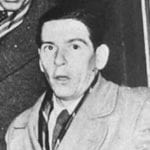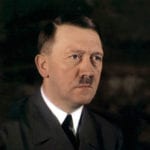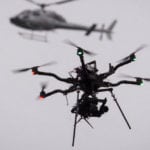 Animals
Animals  Animals
Animals  Gaming
Gaming 10 Game Characters Everyone Hated Playing
 Books
Books 10 Famous Writers Who Were Hypocritical
 Humans
Humans 10 of the World’s Toughest Puzzles Solved in Record Time
 Mysteries
Mysteries 10 Scientific Mysteries We Don’t Fully Understand
 Weird Stuff
Weird Stuff 10 Celebrities Who Have Admitted to Alien Encounters
 Our World
Our World 10 Surprising Secrets of Notre Dame Cathedral
 Miscellaneous
Miscellaneous 10 Intriguing Origins of Popular Carnival Rides
 Weird Stuff
Weird Stuff Ten Unexpected Discoveries Involving Vomit
 Movies and TV
Movies and TV 10 Actors Who Almost Didn’t Take Career-Defining Roles
 Animals
Animals 10 Amazing Animal Tales from the Ancient World
 Gaming
Gaming 10 Game Characters Everyone Hated Playing
 Books
Books 10 Famous Writers Who Were Hypocritical
Who's Behind Listverse?

Jamie Frater
Head Editor
Jamie founded Listverse due to an insatiable desire to share fascinating, obscure, and bizarre facts. He has been a guest speaker on numerous national radio and television stations and is a five time published author.
More About Us Humans
Humans 10 of the World’s Toughest Puzzles Solved in Record Time
 Mysteries
Mysteries 10 Scientific Mysteries We Don’t Fully Understand
 Weird Stuff
Weird Stuff 10 Celebrities Who Have Admitted to Alien Encounters
 Our World
Our World 10 Surprising Secrets of Notre Dame Cathedral
 Miscellaneous
Miscellaneous 10 Intriguing Origins of Popular Carnival Rides
 Weird Stuff
Weird Stuff Ten Unexpected Discoveries Involving Vomit
 Movies and TV
Movies and TV 10 Actors Who Almost Didn’t Take Career-Defining Roles
10 People Who Committed Murder On Airplanes
Ever since the tragic events of September 11, 2001, the number of hijackings and bombings that have taken place on commercial airliners has greatly decreased. However, given the more advanced security measures which exist today, it’s amazing to consider how much easier it used to be to commit murder on an airplane. Decades ago, a person could smuggle a weapon or a bomb onto an airliner with very little resistance and, as a result, a lot of terrible tragedies occurred.
Believe it or not, these acts were not always perpetrated by radical terrorists on suicide missions. In many cases, the perpetrators were willing to commit mass murder for motives as simple as insurance fraud, and they did not care how many innocent people had to die.
10Earnest P. Pletch
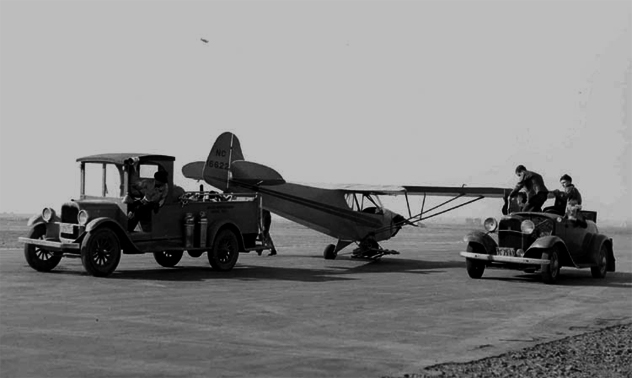
While it is not the world’s first recorded hijacking, the first known murder to be committed by a hijacker took place on October 27, 1939. The perpetrator was 25-year-old Earnest P. Pletch, but the fatal hijacking did not actually take place on a commercial airliner. Pletch traveled from his native Indiana to Brookfield, Missouri to search for his estranged wife, but when he could not find her, he decided—seemingly on a whim—to take some flying lessons. He hooked up with an instructor named Carl Bivens, and they took a few lessons together in a yellow Taylor Cub monoplane. On their third flight, however, Pletch pulled out a gun and shot Bivens twice in the head.
Pletch took the controls and pulled the plane out of a dive before dropping Bivens’s body in a nearby field. For the next 24 hours, Pletch took the aircraft on a joyride. He eventually landed at a farm just outside Bloomington, Indiana and went to a nearby eating establishment. By this time, however, there was already an alert for the stolen plane. A witness reported Pletch’s landing to the police, and he was promptly arrested. Pletch had actually been awaiting trial for another recent incident involving a stolen airplane. He claimed that he’d wanted to steal Bivens’s plane and fly down to Mexico, then shot Bivens when he refused to go along with it.
At the time, Pletch’s crime was unprecedented, and authorities had no idea how to prosecute him. There were complicated jurisdictional issues since no one knew the exact location of the plane when Pletch committed the murder. In the end, Pletch decided to plead guilty to first-degree murder and was given a life sentence.
9Albert Guay
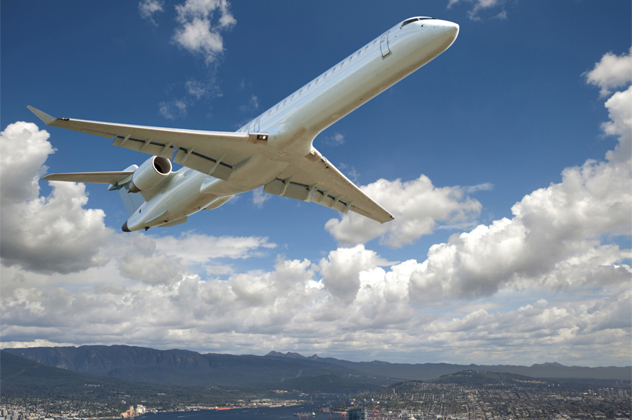
Canadian Pacific Airlines Flight 108 was not the first commercial airliner destroyed by a bomb, but it marked the first time the perpetrator of an airline bombing was caught and punished. On September 9, 1949, Flight 108 took off from Montreal en route to the city of Baie-Comeau, Quebec. After a stopover in Quebec City, the flight continued on its course until it suddenly exploded over the Cap Tourmente National Wildlife Area, killing all 23 people on board. It was apparent from the outset that the crash was a deliberate act of sabotage. Investigators would uncover the motive for the bombing after investigating the background of Rita Guay, one of the passengers who boarded the flight in Quebec City.
Rita Guay had been sent on an errand at the demand of her husband, Albert Guay, who just happened to take out a $10,000 life insurance policy on his wife while purchasing her ticket. Guay had been conducting an affair with a younger waitress, and decided to hire a clockmaker named Genereux Ruest to manufacture a bomb. Ruest’s sister, Marguerite Pitre, brought a package containing the bomb to the airport and shipped it to Baie-Comeau—putting it on the same flight as Rita Guay.
Guay’s plan went awry when Flight 108 was delayed for five minutes before takeoff. If not for the delay, the bomb would have been timed to go off over the St. Lawrence River, making a thorough investigation of the crash impossible. Guay was arrested and executed via hanging on January 12, 1951. Even though Ruest and Pitre claimed they knew nothing about Guay’s plan to blow up the plane, they were also hanged for providing him with the bomb.
8Jack Gilbert Graham

It’s possible that Albert Guay’s murder plot may have inspired another airline bombing six years later. On the evening of November 6, 1955, United Airlines Flight 629 took off from Stapleton Airfield in Denver en route to Portland. Approximately 11 minutes after takeoff, Flight 629 suddenly crashed outside the town of Longmont. Its wreckage was scattered over a radius of several miles, and all 44 people aboard the plane were killed. Since eyewitnesses had reported hearing a loud explosion before the crash, it seemed apparent that a bomb was responsible.
Perhaps taking a cue from the Guay bombing, the FBI conducted background checks on the passengers to see if any of them had purchased life insurance before the flight. One passenger who stood out was a 53-year-old woman named Daisie Eldora King, who had purchased some insurance policies which had suspiciously not been signed. Her son, John Gilbert Graham, was slated to collect on the policies and inherit her estate. However, Graham had a criminal record and had once been suspected of blowing up his mother’s restaurant in order to collect the insurance.
While being questioned by authorities, Graham’s wife claimed that he had slipped a wrapped “Christmas present” inside his mother’s luggage shortly before she left for her flight. When bomb-making parts were found in Graham’s home, he finally confessed to planting the bomb on Flight 629. Graham was convicted of murder and executed in the gas chamber on January 11, 1957.
7Yuji Nishizawa

In 1999, 28-year-old Yuji Nishizawa spotted a potentially serious security flaw at Haneda Airport in Tokyo. He noticed that passengers were able to pick up checked luggage from arriving flights after passing through the security checkpoint. Nishizawa wrote letters about his discovery to numerous agencies, and even requested employment as an airport security guard. But when he received little response, Nishizawa decided to exploit the security loophole himself.
On July 23, Nishizawa packed a kitchen knife into his luggage and had the bag checked in as he boarded a flight from Osaka to Tokyo. After Nishizawa arrived at Haneda Airport, he purchased a ticket for All Nippon Airways Flight 61 to Sapporo. After passing the security checkpoint, Nishizawa went to pick up his arriving luggage from Osaka and took it aboard Flight 61. No one knew that he was smuggling a knife onto the plane.
Flight 61 had a total of 503 passengers and 14 crew members. Shortly after takeoff, Nishizawa pulled out his knife and threatened a flight attendant, forcing her to give him access to the cockpit. When Captain Naoyuki Nagashima refused to follow Nishizawa’s instructions, Nishizawa stabbed him to death and took over the plane’s controls. Flight 61 wound up going into a nosedive and was only 300 meters (1,000 ft) from the ground before other crew members managed to subdue Nishizawa and regain control of the plane. The copilot managed to make an emergency landing, and Nishizawa was subsequently taken into custody and charged with murder. Nishizawa’s motive for the attempted hijacking was his desire to fly a real plane, since he was a huge fan of flight simulation games. He was given a life sentence for Nagashima’s murder in 2005.
6Thomas G. Doty

Believe it or not, there was once a time when airline passengers could purchase life insurance policies for themselves at the airport before they boarded their flight. Unfortunately, this paved the way for at least one tragic suicide bombing. On the evening of May 22, 1962, Continental Airlines Flight 11 departed from O’Hare Airport in Chicago on what was supposed to be a routine flight to Kansas City, Missouri. In the middle of the flight, the plane was flying near the town of Unionville when an explosion suddenly occurred. This caused the tail to break away from the fuselage, and Flight 11 wound up crashing into a field. While there was initially one survivor, all 45 people aboard the plane ultimately died in the crash.
An investigation determined that six sticks of dynamite had been assembled into a bomb, which had been placed into a towel bin in the rear lavatory. One of the passengers, Thomas G. Doty, was named as the likely perpetrator once it was discovered that he had purchased a life insurance policy right before the flight, which would pay out $250,000 for an accidental death. His pregnant wife and five-year-old daughter were to be the beneficiaries. Doty had been suffering numerous financial problems and was due in court to face an armed robbery charge three days after the crash. He decided to commit insurance fraud by taking his own life in an attempt to leave behind a substantial payout for his family. Unfortunately, Doty also wound up taking 44 other innocent lives in the process.
5Samuel Byck
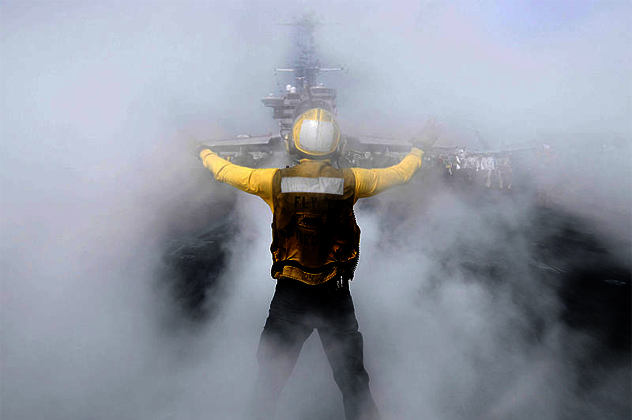
In 1974, Samuel Byck’s life was a mess. He was divorced from his wife, estranged from his four children, and unemployed after numerous failed attempts to start a business. Byck also had an obsessive hatred for President Richard Nixon, whom he blamed for all his personal troubles. During the previous two years, Byck had garnered the attention of the Secret Service after sending threats to Nixon. The Secret Service was dismissive of Byck’s threats, unaware that he was formulating a plan to assassinate Nixon—a plan he called “Operation Pandora’s Box.” On February 22, Byck showed up at Baltimore-Washington International Airport to set his plan in motion.
Byck was carrying a .22-caliber revolver and a briefcase containing a homemade gasoline bomb. At the security checkpoint, Byck pulled out his weapon and shot a police officer to death before charging onto Delta Air Lines Flight 523, which was preparing to depart for Atlanta. Byck stormed the cockpit and ordered the two pilots, Douglas Reese Lofton and Fred Jones, to take off, but they explained that this could not be done until the wheel blocks were removed. Byck responded by shooting both the pilots, grabbing a random female passenger, and ordering her to fly the plane. From the runway, shots were fired through the cockpit window, wounding Byck.
After hitting the floor, Byck decided to commit suicide by shooting himself in the head. Jones would die from his wounds, but Lofton survived the attack. A tape recording was later discovered where Byck outlined his plan for Operation Pandora’s Box: He wanted to assassinate Nixon by hijacking a plane and flying it directly into the White House. This story went on to become the inspiration for the 2004 film The Assassination of Richard Nixon, featuring Sean Penn as Samuel Byck.
4Chio Tok
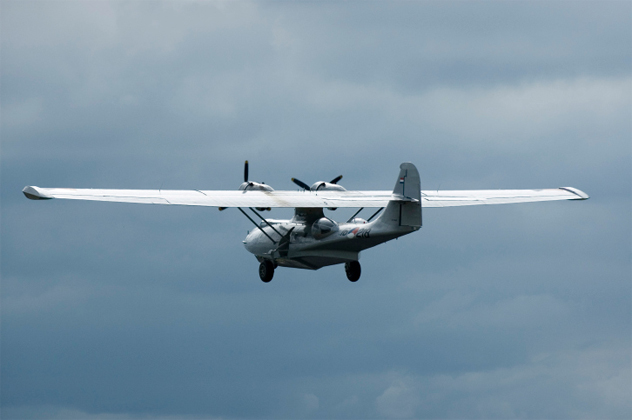
On July 16, 1948, Miss Macao, a Catalina amphibian seaplane owned by Cathay Pacific Airways, took off on a seemingly routine flight from Macau to Hong Kong. Shortly thereafter, Miss Macao crashed into the Pearl River Delta, killing 25 of the 26 individuals on board. The unconscious body of Wong Yu, the plane’s only survivor, was found floating in the water by two fishermen. Investigators determined that foul play was involved after finding bullet casings in the wreckage and bullet wounds in one of the deceased passengers. In a cruel twist of fate, the sole survivor would confess to being involved in the hijacking plot which had ended up bringing down the plane.
The mastermind behind the plot was a man named Chio Tok, who teamed up with Wong and two other accomplices to hijack Miss Macao and rob the passengers. This would turn out to be the world’s first recorded incident of air piracy. Many of the passengers were wealthy, and the hijackers’ plan was to take control of the plane and land it on a remote island to hold the passengers for ransom. However, when the pilot refused to relinquish the aircraft, a struggle ensued, and Chio Tok shot him in the head. After the pilot collapsed onto the controls, Miss Macao went into a nosedive and Wong managed to jump out the emergency exit just before it crashed.
However, since air piracy was unprecedented at the time, neither Macau nor Hong Kong had proper laws in place to deal with it. Since the incident took place over Chinese territory, no one actually had the authority to prosecute Wong Yu for his involvement in the crime. He was released and deported to China in 1951.
3Julian A. Frank
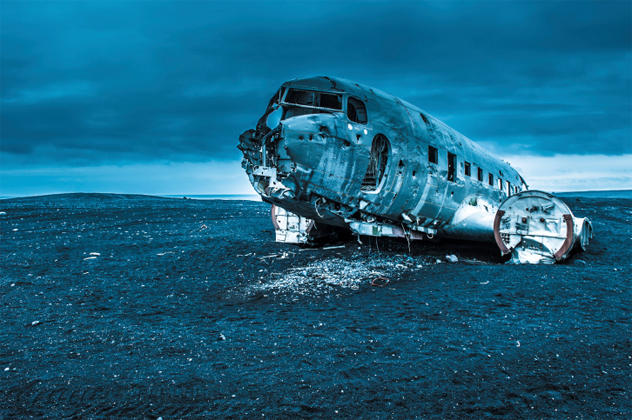
On the evening of January 6, 1960, a Boeing 707 was scheduled for a flight to Miami from New York’s Idlewild International Airport. However, when a cracked window was discovered in the cockpit, the passengers were split into two groups and put on two different planes. Most of the passengers boarded a Lockheed Electra, unaware that that this tiny switch would ultimately save their lives. The other 29 passengers and five crew members were put on a Douglas DC-6B, which became National Airlines Flight 2511. Approximately three hours after takeoff, Flight 2511 crashed into a farmer’s field just outside Bolivia, North Carolina, taking the lives of everyone on board.
After discovering the remains of a passenger named Julian A. Frank, investigators were able to determine that a bomb had brought down the plane. Frank was found 25.5 kilometers (16 mi) away from the crash site, and wires and metal fragments were embedded in his body. It was apparent that a dynamite bomb had gone off underneath Frank’s seat, but it’s always been up for debate whether he intentionally brought the bomb onto the plane. Frank had been a lawyer who was currently under investigation for embezzlement, and he had purchased a $900,000 life insurance policy before boarding the plane. It does seem pretty likely that Frank smuggled the bomb aboard Flight 2511, but a tragedy which took place less than two months beforehand has caused some speculation that Frank could have been a patsy.
2Robert Vernon Spears

On the evening of November 16, 1959, National Airlines Flight 967 took off from Tampa en route to New Orleans, but suddenly vanished while flying near the Gulf of Mexico. After a search was mounted, scattered wreckage of the aircraft was eventually discovered, along with the remains of some of the passengers. It was apparent that Flight 967 had crashed into the Gulf, but the rest of the aircraft and most of the victims were never recovered. A total of 42 people lost their lives. A subsequent investigation led many to believe that the crash had been caused by a bomb. Suspicion started to mount after it was discovered that an ex-con named William Taylor had purchased a life insurance policy at the airport on the evening of the crash. However, there was no record of Taylor purchasing tickets for any flights.
Even stranger was the discovery of a “Dr. Robert Vernon Spears” on the passenger manifest of Flight 967. Spears had also purchased a life insurance policy on the evening of the crash, and he and Taylor had been cellmates together in prison. However, Spears was eventually discovered to be alive and well. It’s theorized that Spears had Taylor purchase a ticket on Flight 967 under his name before tricking him into carrying a bomb aboard. This would allow Spears to fake his own death while his wife collected the insurance payout. An informant would later make the unverified claim that Spears also purchased a life insurance policy on Julian A. Frank before Frank was killed on Flight 2511. Spears was questioned by the FBI, but there was no evidence to charge him with anything related to the two crashes. He died in 1969.
1Francisco Paula Gonzales

In the early-morning hours of May 7, 1964, Pacific Air Lines Flight 773 took off from Reno, Nevada en route to San Francisco. The plane was minutes away from landing when it suddenly descended into a steep nosedive. A garbled message was heard over the radio about someone being shot before the flight crashed into a hillside in Contra Costa County. A total of 44 people lost their lives, but when a .357 Magnum was found in the wreckage, it became apparent that someone on board had caused the tragedy by shooting the two pilots. The investigation turned toward a 27-year-old passenger named Francisco Paula Gonzales, who had purchased $105,000 in life insurance policies at the airport on the day before the crash.
Gonzales originally hailed from the Philippines and was a member of their sailing team at the 1960 Olympics, but he suffered numerous financial difficulties after moving to San Francisco, which left him heavily in debt. In the days leading up to the crash, Gonzales made frequent references to his impending death. After traveling to Reno, Gonzales spent the night gambling before boarding an early-morning flight to San Francisco. He smuggled a .357 Magnum onto the plane and burst into the cockpit to murder both pilots. Gonzales then turned the gun on himself and did not live to experience the horrifying crash he caused. Because of this tragedy, it would become mandatory for all commercial airliners to keep their cockpit door locked during flights.
Robin Warder is a budding Canadian screenwriter who has used his encyclopedic movie knowledge to publish numerous articles at Cracked.com. He is also the co-owner of a pop culture website called The Back Row and recently worked on a sci-fi short film called Jet Ranger of Another Tomorrow. Feel free to contact him here.



